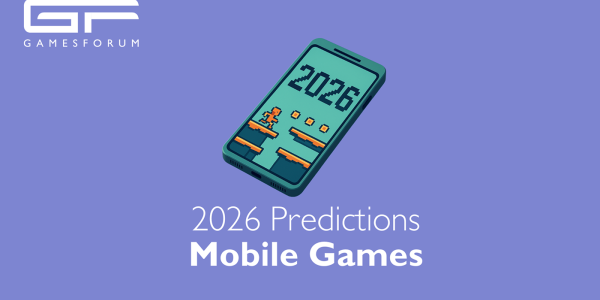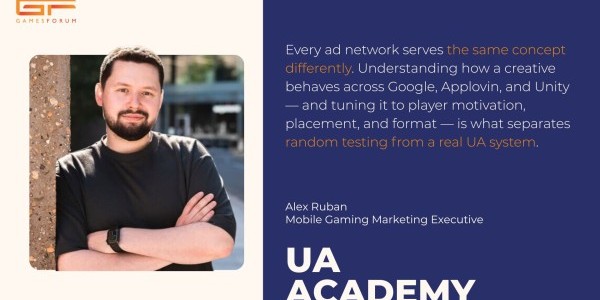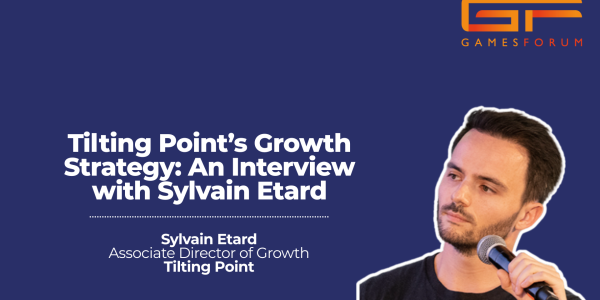Marital Valéry, co-founder from Oh Bibi! talks early stage marketing with Max Samorukov

In this series, Max Samorukov, CEO of AppMagic discusses the latest trends with the top management of mobile game companies. We're delighted to welcome Martial Valéry, co-founder of the French studio with a darling name Oh Bibi and former content director at Gameloft. Oh Bibi’s most well-known project is a FPS called FRAG Pro Shooter.
What do you think are the major trends in the mobile app gaming market right now?
Martial: Phew, that’s a big one! I think the biggest trend that could be noticed lately is an increase of the spectrum in terms of game types. You know, we have these huge games like Genshin Impact, Call of Duty Mobile or super high quality games with very “Twitch-esque” gameplay. At the same time, we have super competitive battler games like those with the Match-3 gameplay. I am not sure whether it qualifies as a trend, but the fact is that the mobile market is still widening the spectrum: from titles with simple and accessible gameplays with strong monetization to very immersive and really high quality games. This is pretty crazy that two years ago everyone was like, “Ah, a virtual joystick is crap.” And now we are starting to see more and more games with this type of control coming up that are more successful compared to the common ones. Innovations like these can help further explore the audience of core genre gamers.
Max: We have recently added “4X/Match-3” to our genre classification. And there are a lot of games of this kind, not just one! Two years ago, I would never have thought a mix like this could exist and perform well. The idea behind this eclecticism is understandable: to mix one of the most addictive core gameplays with one of the best monetizing metagames. Back then, I would have said that the target audiences for these two didn’t match at all. But games of this type now account for about 2M downloads and $41M in revenue per month, and the numbers are growing.
Creating an app, how do you look for ideas? How do you validate the idea as promising enough?
Martial: I think it is very important to be able to understand the audience and the potential of the game idea/concept. And we found AppMagic to be super relevant for this: it gives you a broader sense of the market size and potential LTV.
We usually do CPI tests. I mean, even hypercasual game devs do CPI tests. However, their CPIs are usually set by the market. So, they already know a good CPI from a bad one. But when you do a different kind of game, it’s hard to know what’s good and what’s bad. So, being able to select a game genre and check the LTV of the competitors is very useful: if I get the CPI that is above the LTV of my competitors, that’s definitely not a good sign—we’ll want it to be lower. And, then, if I select a genre or an audience, I understand whether there is any room for innovation: say, сan I bring any new mechanics or something else viable to the table and at the same time not destroy the game or what the audience is looking for in it? Thus, what helps me understand the potential of the game idea is sizing the market, checking if you have the competitive edge on the marketing side, and evaluating whether or not you can bring something new. We all see that the market is very structured now, but developers are still trying to find some place for innovation, like the cross breeding of genres you’ve mentioned. That is something we are looking for when doing market research.
You’ve mentioned that you use CPI tests to figure out the metrics for your future products, such as the size of the audience. Could you please go into a bit more detail on this?
Max: I’ve got a story! At Crazy Panda, we ran a test of this kind not that long ago: we were trying to choose a better setting for a new game, the one that would help us achieve better ROI. We tried, for example, a very casual setting of serving customers in a restaurant and then another one: zombies. We figured that the first one had much better CPI, but then we found out that the audiences were completely different in terms of demographics: the first one would attract youngsters, and the ad campaign for the second one was optimized to target quite a mature audience of M 28-35, which is generally believed to have good solvency. So it was quite hard to make the final decision regarding the setting. What do you say, how do you deal with cases like this?
Martial: We are actually at this stage now, so I can’t yet talk about any insights here. But what you are describing is complicated. When you do hypercasual games, it’s so easy to validate the game concept and be super creative, because the market is simple from the audience point of view. But when you do a more complex game, it gets trickier. I think, if you can control the audience and make sure that you keep the same audience through all of your tests, then you have a better validation. So here, the CPI tests are not as valid as they could be on the hypercasual market. But it’s a good tool to have anyways.
Max: Yes, and there is also another useful test that requires building a product that is complete, or playable, to a certain extent. For example, you produce a vertical slice—just one hour of gameplay of your future game—but it looks and feels like a complete game. Once you’ve got it, you can run D1 retention tests just to figure out how many users want to return to your game. This stage gives you a great opportunity to run user acquisition campaigns optimized for users that tend to retain. Now you’ll have a much better understanding of the size of your audience and how expensive it is.
So, do you do D1 retention tests?
Martial: We tried them in the past. The problem here is when you build a half-baked product and start putting it to life, it can be very distracting for the team. Last time we did it, we stopped right there and decided that we wouldn’t do it for our next project, since we did not actually find any benefits. Theoretically, though, I can see how useful it can be. In our case, it really mixed things up for the team and the production process. Once the game is live, we start chasing after data points and KPIs, and it never stops; now, while you’re chasing the KPIs, you forget about the game itself.
Max: However, the design of the test can clarify if you would be better off wrapping up work on the game at an early stage if it’s not very promising. Do you believe there is a test or a set of tests you can rely on to answer the question of whether the game is worth further investments on the early stage or not?
Martial: I think it really depends: for some games, it could be possible, and for others it could be counterproductive. For some games, you might need to complete nearly the entire game for a reasonable test.
Were there any cases when you’d stop working on the game during its soft launch? And cases when you didn’t, and the game went on to perform poorly? Do you think there had been a way to properly evaluate how promising the game had really been and hence to make a wiser decision?
Martial: Yes, in 2016 we launched a game after two years of production and extensive soft launch, but we killed it after 3 months of being live. As for some titles that we continued to develop, now we know that we should have stopped working on them long ago.
Max: What were the reasons to stop developing the game?
Martial: The CPI was too high.
In conclusion, do you have any special advice to give to the less experienced game developers?
Martial: I think what is trendy these days is a type of persona-research, when developers try to get to know player types in greater depth and not just in terms of social demographics and geo distribution, but more in terms of what they like in the process of their gameplay. All those player archetypes, you know. That helps get closer to the customers and actually understand their real motivation for playing a game. That is something that has been overlooked for a long time, but the devs are now starting to catch up, and I think it is very important for the game dev world to do that.
By Max Samorukov, CEO of AppMagic for Gamesforum











